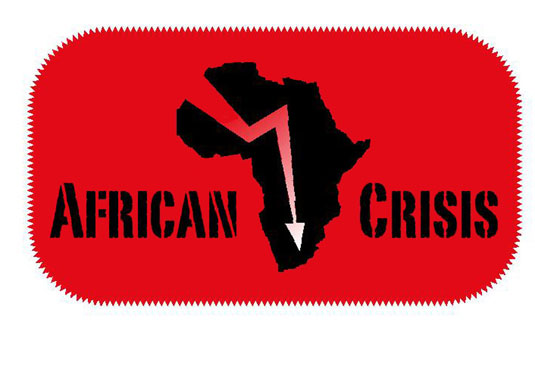WARNING: This is Version 1 of my old archive, so Photos will NOT work and many links will NOT work. But you can find articles by searching on the Titles. There is a lot of information in this archive. Use the SEARCH BAR at the top right. Prior to December 2012; I was a pro-Christian type of Conservative. I was unaware of the mass of Jewish lies in history, especially the lies regarding WW2 and Hitler. So in here you will find pro-Jewish and pro-Israel material. I was definitely WRONG about the Boeremag and Janusz Walus. They were for real.
Original Post Date: 2009-05-18 Time: 23:00:03 Posted By: Jan
Johannesburg – Like a Federal Bureau of Investigation agent, Nicksy Gumede-Moeletsi, a virologist who heads the sequencing section at the Polio Molecular Unit of South Africa’s National Institute for Communicable Diseases (NICD), tracks her “criminal”, in this case a virus, by studying variations in the “genotypes” instead of fingerprints.
The sequencing unit in South Africa is one of seven centres in the world that trace the origin of polio outbreaks. Gumede-Moeletsi traced the origins of the 2005 outbreak in Angola – which had remained polio-free since 2001 – to a polio strain prevalent in India by determining the genetic constitution of the poliovirus.
From Angola the Indian virus strain travelled south to neighbouring Namibia, north to the Democratic Republic of Congo (DRC) and from there reached the Central African Republic (CAR) in 2008.
Polio, a highly infectious non-curable disease that can cause total paralysis in a matter of hours, is spread quite easily by contact from person to person. The virus is also spread through faecal-oral contact, and there is evidence that flies can passively transfer poliovirus from faeces to food.
According to the Global Polio Eradication Initiative, spearheaded by the World Health Organisation (WHO), Rotary International, the US-based Centers for Disease Control (CDC) and UNICEF, most people infected with poliovirus have no signs of illness, and are never aware they have been infected.
The disease can be prevented by orally giving children aged under five a live weakened Sabin polio vaccine, named after Albert Sabin the scientist who developed the vaccine, or by a trained health worker injecting the inactivated Salk polio vaccine.
Uncovering the route along which a virus spreads is critical. Polio outbreaks can be caused either by a wild polio virus type, or a vaccine-derived poliovirus (VDPV).
On rare occasions, strains of the live virus contained in the oral polio vaccine (OPV) given to children are known to have changed, reverting to a form with the capacity to circulate, and which can cause paralysis in humans.
Gumede-Moeletsi said it was essential for a country experiencing an outbreak to know what it was up against, and sequencing helped detect the possibility of a new strain, as well as determining whether it was a wild polio virus or a VDPV.
Sequencing also helped to find gaps in the affected country’s immunisation coverage. For example, if sequencing picked up a mutated form of the virus that seemed newer than a strain prevalent before the country’s last vaccination drive, it might indicate that the coverage of the immunisation programme had not been that effective, said Dr Adrian Puren, deputy director of NICD.
Finish the job
The polio detective work has also been used to actively encourage Afghanistan, India, Pakistan and Nigeria – the only four countries which remain polio-endemic – “to finish the job of complete eradication”, said Mark Pallansch, who heads the polio laboratory at the CDC. He has worked on the polio eradication programme since 1985 and has traced frequent outbreaks to a virus originating in the four countries.
In August 2003, radical Muslim leaders in three northern states of Nigeria suspended polio immunisation campaigns after rumours that the vaccine was laced with agents causing AIDS and sterility.
A new outbreak, originating in the state of Kano, subsequently occurred and infected previously polio-free areas of Nigeria as well as eight formerly polio-free countries in West and central Africa.
The strain then travelled from Sudan to Saudi Arabia, “probably during Haj”, the annual Muslim pilgrimage to Mecca, Pallansch said, and in 2005 spread to Yemen as well as Indonesia – a country that had been polio-free for 10 years.
These outbreaks underline the importance of being vigilant. “You need a good surveillance system and a regular immunisation programme,” said Pallansch. “As long as polio is endemic, even in one country, everyone has to keep up with their immunisation programme.”
Nigeria’s neighbour, Cameroon, had managed to keep the disease from developing into an outbreak with an effective immunisation campaign, he pointed out, unlike other neighbours, such as conflict-ridden Sudan.
Polio can be eradicated, “if you have the will,” said Pallansch. “If a developing country like Bangladesh, with a huge population and challenges, can do it, anyone can do it.”
The threat posed by VDPV is mounting: in 2008 Gumede-Moeletsi picked up 18 cases in DRC and four in Ethiopia. She is concerned about the threat posed by VDPV, which is mounting. In 2008 Gumede-Moeletsi picked up 18 cases in DRC and four in Ethiopia.
Her concern supports calls for wider use of IPV which eliminates the risk of VDPV as it does not contain live virus, once wild polio has been eradicated. However, according to Sona Bari of WHO, “only OPV has been proven to stop polio circulating within a community.” So the debate on which vaccine to use continues.
[ This report does not necessarily reflect the views of the United Nations ]
Original Source: 
Original date published: 18 May 2009
Source: http://allafrica.com/stories/200905180865.html?viewall=1
